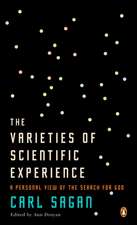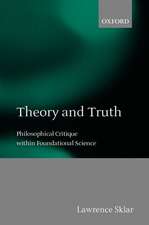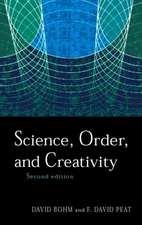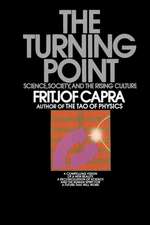“The main Business of natural Philosophy”: Isaac Newton’s Natural-Philosophical Methodology: Archimedes, cartea 29
Autor Steffen Ducheyneen Limba Engleză Paperback – 29 noi 2013
| Toate formatele și edițiile | Preț | Express |
|---|---|---|
| Paperback (1) | 948.47 lei 6-8 săpt. | |
| SPRINGER NETHERLANDS – 29 noi 2013 | 948.47 lei 6-8 săpt. | |
| Hardback (1) | 954.62 lei 6-8 săpt. | |
| SPRINGER NETHERLANDS – 20 oct 2011 | 954.62 lei 6-8 săpt. |
Din seria Archimedes
- 5%
 Preț: 909.01 lei
Preț: 909.01 lei - 18%
 Preț: 899.21 lei
Preț: 899.21 lei - 18%
 Preț: 785.55 lei
Preț: 785.55 lei -
 Preț: 382.36 lei
Preț: 382.36 lei - 18%
 Preț: 1833.33 lei
Preț: 1833.33 lei - 15%
 Preț: 643.84 lei
Preț: 643.84 lei - 18%
 Preț: 951.77 lei
Preț: 951.77 lei - 15%
 Preț: 645.79 lei
Preț: 645.79 lei - 15%
 Preț: 644.30 lei
Preț: 644.30 lei - 20%
 Preț: 577.17 lei
Preț: 577.17 lei - 18%
 Preț: 1054.18 lei
Preț: 1054.18 lei - 15%
 Preț: 646.62 lei
Preț: 646.62 lei - 18%
 Preț: 1110.09 lei
Preț: 1110.09 lei - 18%
 Preț: 1211.25 lei
Preț: 1211.25 lei - 18%
 Preț: 730.02 lei
Preț: 730.02 lei - 18%
 Preț: 1546.82 lei
Preț: 1546.82 lei - 18%
 Preț: 891.48 lei
Preț: 891.48 lei - 18%
 Preț: 776.88 lei
Preț: 776.88 lei - 18%
 Preț: 1214.60 lei
Preț: 1214.60 lei - 18%
 Preț: 1113.26 lei
Preț: 1113.26 lei - 18%
 Preț: 777.69 lei
Preț: 777.69 lei - 18%
 Preț: 995.83 lei
Preț: 995.83 lei - 15%
 Preț: 635.47 lei
Preț: 635.47 lei - 24%
 Preț: 1459.25 lei
Preț: 1459.25 lei - 18%
 Preț: 1666.97 lei
Preț: 1666.97 lei - 18%
 Preț: 1114.83 lei
Preț: 1114.83 lei - 15%
 Preț: 645.60 lei
Preț: 645.60 lei
Preț: 948.47 lei
Preț vechi: 1156.67 lei
-18% Nou
Puncte Express: 1423
Preț estimativ în valută:
181.48€ • 189.49$ • 150.21£
181.48€ • 189.49$ • 150.21£
Carte tipărită la comandă
Livrare economică 05-19 aprilie
Preluare comenzi: 021 569.72.76
Specificații
ISBN-13: 9789400737211
ISBN-10: 9400737211
Pagini: 380
Ilustrații: XXVI, 354 p.
Dimensiuni: 155 x 235 x 20 mm
Greutate: 0.53 kg
Ediția:2012
Editura: SPRINGER NETHERLANDS
Colecția Springer
Seria Archimedes
Locul publicării:Dordrecht, Netherlands
ISBN-10: 9400737211
Pagini: 380
Ilustrații: XXVI, 354 p.
Dimensiuni: 155 x 235 x 20 mm
Greutate: 0.53 kg
Ediția:2012
Editura: SPRINGER NETHERLANDS
Colecția Springer
Seria Archimedes
Locul publicării:Dordrecht, Netherlands
Public țintă
ResearchCuprins
List of Figures,- Introduction,- Part I: Newton’s Causal Methodology,- 1 Newton and the Causes: Something Borrowed and Something New,- Part II: Newton’s Methodology, or: How to Deduce Causes by Their Effects,- 2 Uncovering the Methodology of the Principia (I): The Phase of Model Construction,- 3 Uncovering the Methodology of the Principia (II): The Phase of Model Application and Theory Formation,- 4 Facing the Limits of Deductions from Phenomena: Newton’s Quest for a Mathematical-Demonstrative Optics,- 5 Uncovering the Methodology of the Principia (III): A Brief Chronology of Newton’s Methodological Itinerary,- Part III: Newton’s Theology,- 6 “To Treat of God from Phenomena”,- 7 Conclusion,- References,- Index.
Recenzii
From the reviews:
“This new study by Steffen Ducheyne … focuses more on Newton’s natural philosophy. This marks a further advance of our understanding of this important subject, and Ducheyne is to be congratulated for discovering something new, and important, to say about a figure whose work has generated a veritable scholarly industry. … this is a major and important contribution to this field.” (John Henry, Science & Education, May, 2012)
“This new study by Steffen Ducheyne … focuses more on Newton’s natural philosophy. This marks a further advance of our understanding of this important subject, and Ducheyne is to be congratulated for discovering something new, and important, to say about a figure whose work has generated a veritable scholarly industry. … this is a major and important contribution to this field.” (John Henry, Science & Education, May, 2012)
Textul de pe ultima copertă
In this monograph, a historically detailed and philosophical-systematic study will be undertaken of Newton's scientific methodology. It will be shown that the hypothesis that Newton was a bad or confused methodologist is beset with many difficulties and that Newton was not a simplistic inductivist nor did he believe that causes can be derived unconditionally from phenomena. Special attention will be given to Newton’s Principia-style methodology. With respect to Newton’s Principia-style methodology, it will be shown that Newton carefully distinguished between the (physico-)mathematical treatment of force and the physical treatment of force and that the former should always precede the latter in order to uncover the forces present in rerum natura more safely. In the (physico-)mathematical treatment of force, Newton explicated the physico-mathematical conditions under which, given the laws of motion, certain motions would occur exactly or quam proxime. Of course, Newton clearly focused on those motions which would be relevant in the study of the systema mundi, i.e. Keplerian motions. It will be shown that the models of Book I are not purely mathematical, but physico-mathematical instead: the idealized motions and forces of the models of Book I are iso-nomological to real-world bodies and forces and they are analyzable by the same technical concepts, i.e. Definitions I-VIII. Given these features, Newton could bridge the gap between mathematics and physics: the physico-mathematical conditions, which are structurally similar to what would become their referents in the context of Book III, are predicated under the same laws that hold in the empirical world and, given the Definitions, one could relate certain technical terms to their quasi-physical measures.
Caracteristici
Contains many previously unpublished transcriptions from Newton's private manuscripts Thoroughly based on a careful study of Newton's manuscripts A combination of detailed historical research cum philosophical-systematic explication of Newton's methodology. Therefore, it will attract historians and philosophers of science.




















